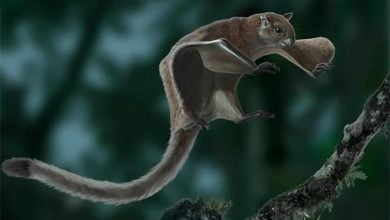Para Peneliti Mungkin Telah Memecahkan Paradoks Otak Berusia Puluhan Tahun Dengan AI


Ilmuwan Cold Spring Harbor Laboratory mengembangkan algoritme AI yang terinspirasi oleh efisiensi genom, sehingga mencapai kompresi data dan kinerja tugas yang luar biasa.
Dalam arti tertentu, masing-masing dari kita memulai hidup dengan siap untuk bertindak. Banyak hewan menunjukkan prestasi luar biasa segera setelah mereka dilahirkan. Laba-laba membuat jaring. Paus berenang. Tapi dari mana datangnya kemampuan bawaan ini? Jelas sekali, otak memainkan peran kunci karena mengandung triliunan koneksi saraf yang diperlukan untuk mengendalikan perilaku kompleks.
Namun, genom hanya memiliki ruang untuk sebagian kecil dari informasi tersebut. Paradoks ini telah membingungkan para ilmuwan selama beberapa dekade. Kini, Profesor Anthony Zador dan Alexei Koulakov dari Cold Spring Harbor Laboratory (CSHL) telah menemukan solusi potensial dengan menggunakan teknologi ini[{” attribute=”” tabindex=”0″ role=”link”>artificial intelligence.
When Zador first encounters this problem, he puts a new spin on it. “What if the genome’s limited capacity is the very thing that makes us so smart?” he wonders. “What if it’s a feature, not a bug?” In other words, maybe we can act intelligently and learn quickly because the genome’s limits force us to adapt. This is a big, bold idea—tough to demonstrate. After all, we can’t stretch lab experiments across billions of years of evolution. That’s where the idea of the genomic bottleneck algorithm emerges.
Using AI to Mimic Evolutionary Efficiency
In AI, generations don’t span decades. New models are born with the push of a button. Zador, Koulakov, and CSHL postdocs Divyansha Lachi and Sergey Shuvaev set out to develop a computer algorithm that folds heaps of data into a neat package—much like our genome might compress the information needed to form functional brain circuits. They then test this algorithm against AI networks that undergo multiple training rounds. Amazingly, they find the new, untrained algorithm performs tasks like image recognition almost as effectively as state-of-the-art AI. Their algorithm even holds its own in video games like Space Invaders. It’s as if it innately understands how to play.
Does this mean AI will soon replicate our natural abilities? “We haven’t reached that level,” says Koulakov. “The brain’s cortical architecture can fit about 280 terabytes of information—32 years of high-definition video. Our genomes accommodate about one hour. This implies a 400,000-fold compression technology cannot yet match.”
Nevertheless, the algorithm allows for compression levels thus far unseen in AI. That feature could have impressive uses in tech. Shuvaev, the study’s lead author, explains: “For example, if you wanted to run a large language model on a cell phone, one way [the algorithm] yang dapat digunakan adalah membuka model Anda selapis demi selapis pada perangkat kerasnya.”
Aplikasi semacam itu bisa berarti AI yang lebih berkembang dengan waktu proses yang lebih cepat. Dan kalau dipikir-pikir, hanya butuh 3,5 miliar tahun evolusi untuk sampai ke sini.
Referensi: “Pengkodean kemampuan bawaan melalui hambatan genom” oleh Sergey Shuvaev, Divyansha Lachi, Alexei Koulakov dan Anthony Zador, 12 September 2024, Prosiding Akademi Ilmu Pengetahuan Nasional.
DOI: 10.1073/pnas.2409160121
Studi ini didanai oleh Deep Valley Labs, G. Harold dan Leila Y. Mathers Foundation, dan Schmidt Futures.




